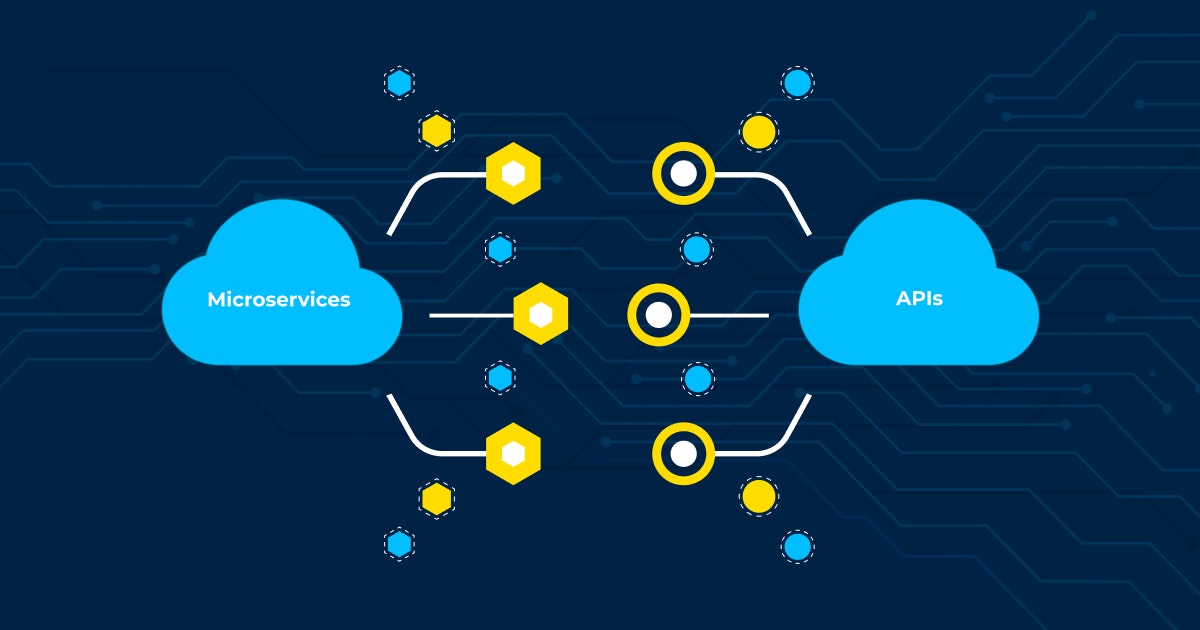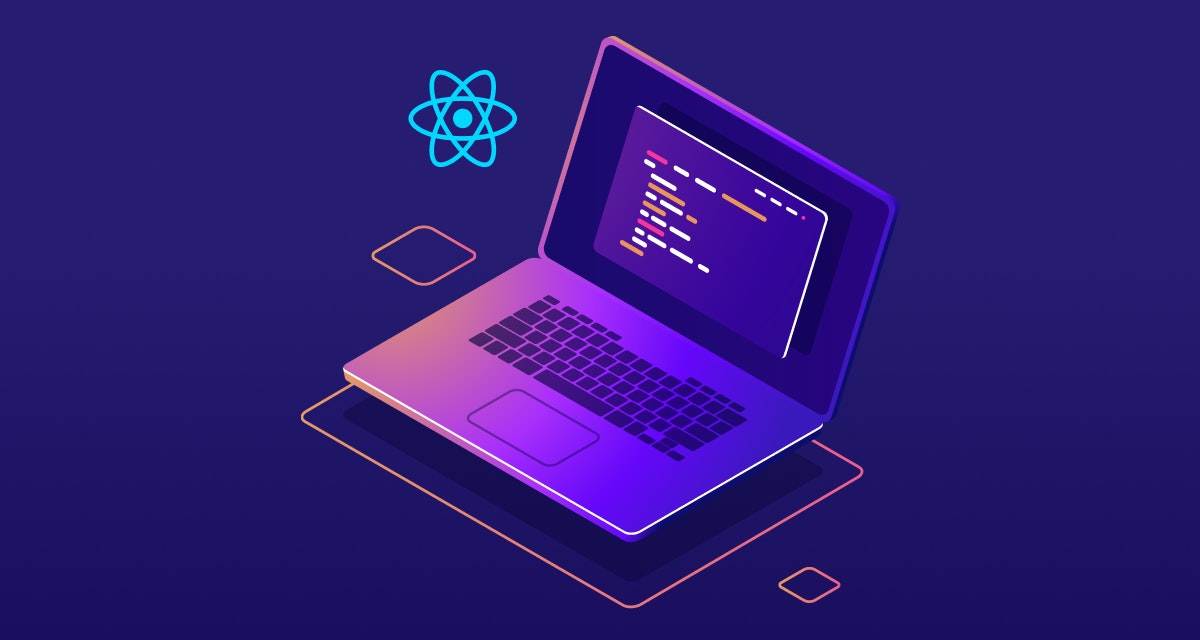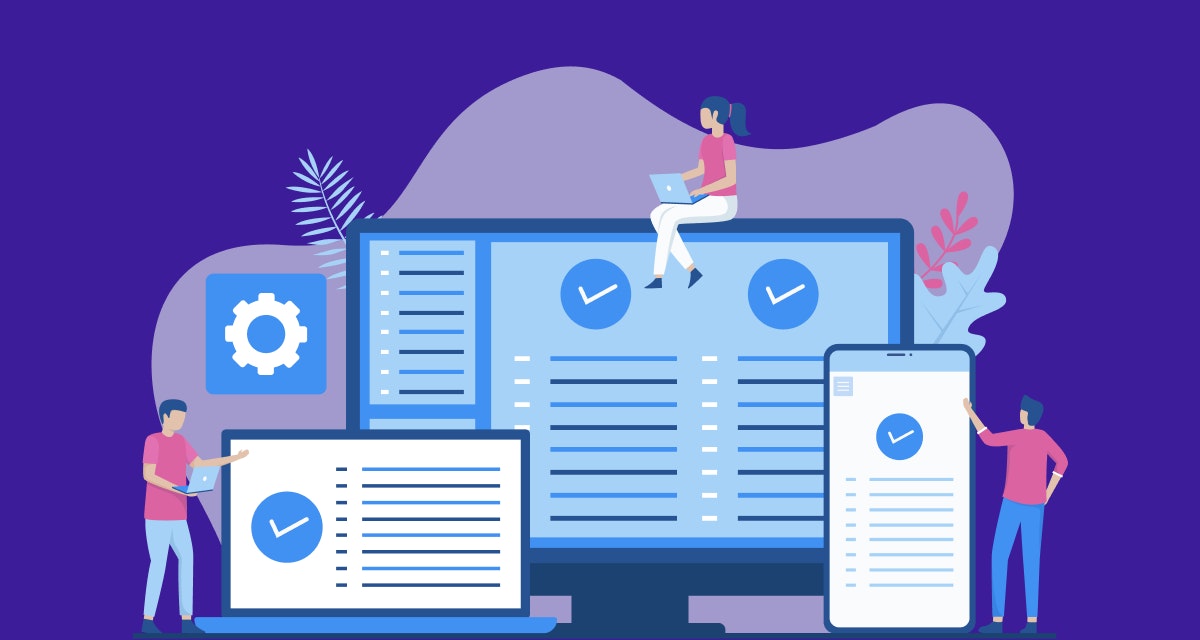The days of monolithic enterprise applications are fast coming to an end. There is an increase in virtualized environments, combined with a modern organization's demand for rapid change. This has prompted an expectation that the app features must change on an ongoing basis.
When exploring software architecture and integrations, you most definitely would have come across two fancy-sounding words: microservices and APIs. Both concepts stand at the centerfold of web application development, with some overlap in their uses.
However, it would help to recognize the differences between microservices and APIs and how they are applied. The knowledge will help you have more fruitful conversations with developers and build compelling apps for the long haul. Let us begin:
What is a microservice?
A software architecture style divides an application's various functions into smaller components called "services." It is an approach to creating a single application that breaks its functionality into modular components.
When the development style is like this, the application follows a microservice architecture. A microservice, more specifically, is derived from the distributed computing architecture connecting many small services rather than having one large service.
For instance, in a funds transfer service like PayNow, the microservice architecture contains individual services for integrations with online merchants, user account management, and user authentication. Each service works like its unique piece of software in association with the more extensive system. The protocols are lightweight, and the services are fine-grained.
How do microservices work?
A microservice strives to address a single concern, which is typically a function for data search, logging, or web service. The approach boosts flexibility, helping developers update the codebase of a single function without redeploying the rest of the microservices architecture.
Examples of microservices
Simplicity is the primary goal of a microservices architecture. They can be thought of as job roles in an organization, with each microservice having one job to do.
For example, Amazon has developed a single service for the "Buy" button on a product page and a single service for the tax calculator function.
On the other hand, Uber assigned clear ownership of specific services to individual development teams for billing, driver management, passenger management, and trip management, enhancing the speed and quality of application development.
Retail giant Walmart also wholly overhauled its system and re-platformed the core business tasks to microservices. The approach enabled them to redistribute the workload and streamline its system's workflow.
Pros of microservices
Deploying the microservice architecture uncomplicated the software development process. But it also comes with a range of benefits, such as the following:
- It enables event streaming technology to encourage easy integration than heavyweight interposed communication.
- Microservices are self-contained and independent deployment modules that can enable more and more services as the need arises.
- The cost of scaling a microservices architecture is relatively less than expanding a monolithic application as it minimizes the impact of existing service.
- It makes it easier to change or upgrade every service individually than upgrading the entire application, which is also time-consuming and pain-staking.
Cons of microservices
Sure, the microservices architecture makes it easier to maintain the software in the long run. However, that does not mean it does not have any disadvantages. Here are a few drawbacks of microservices that you must know about:
- Splitting an app into smaller modules increases the communication overhead, so developers have to be extra cautious while handling requests between various modules. Plus, there might be a need for an interpreter.
- The increase in the total number of microservices directly influences the number of resources needed to implement them.
- Debugging a microservices architecture is difficult as each service needs to be launched and tested individually. This becomes a very time-consuming process.
- Microservices architecture is a good option for more enormous applications but not for small-scale apps because of the effort to maintain every service.
Best practices of microservices
Now that you have a quick overview of the pros and cons of microservices, let us take a deeper dive into a few best practices that will enable you to create a robust, easy-to-manage, and scalable system of intercommunicating microservices:
1. Small application domain
When you deploy a microservices strategy, you embrace the single responsibility principle. By doing so, you limit the negative impact of the service failing. If a single microservice is held accountable for a string of things, its failure will have a domino effect on the rest of the system.
Therefore, a microservice should micro. Keep the application domain of your microservices small and dedicated to a single functionality. This will reduce the impact if any issues arise, making smaller services simpler to maintain.
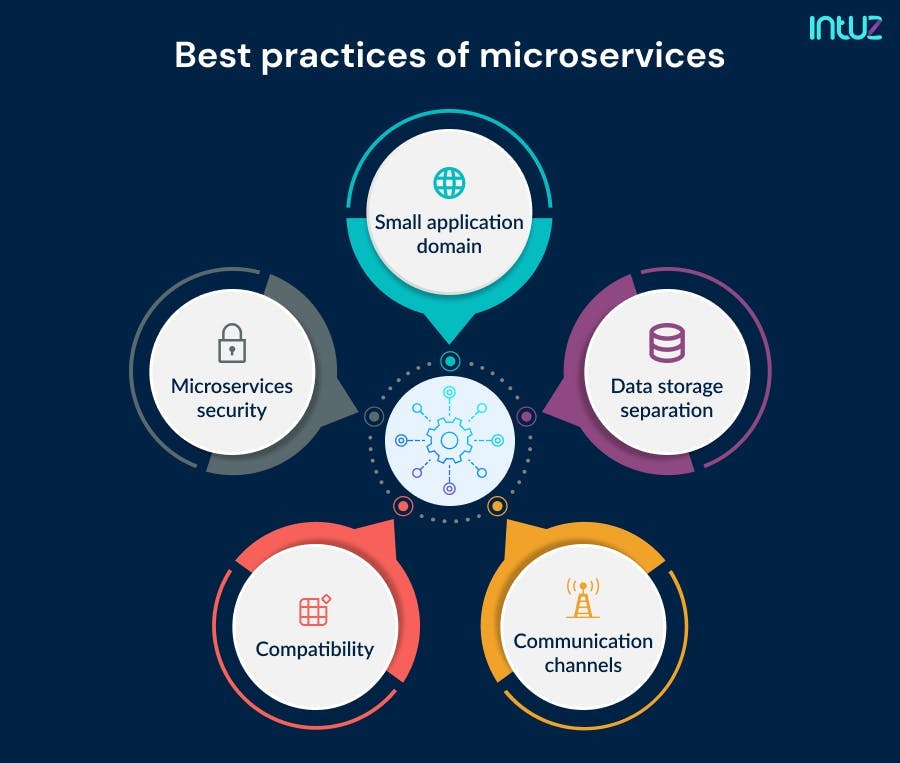
2. Data storage separation
When multiple microservices connect to the same database, it is still a monolithic architecture, making it very fragile. When adopting a microservice architecture, there is no requirement for separate microservices for using the same file storage service.
This is not the case unless, of course, there is an overlap of files. A single service depends on its dedicated data store whose failure will not impact any service besides that one. Therefore, each microservice should have its data persistence layer.
This ensures isolation from other microservices and minimizes the blast radius if a specific data set suddenly becomes unavailable. In addition, you would have more flexibility to find the provider that best fits the needs of that individual microservice.
3. Communication channels
How microservices interact with each other during events of interest should not be ignored. Otherwise, a single unavailable service can cause a complete communication breakdown, which is responsible for the collapse of an entire application.
Two types of communication take place between microservices — synchronous and asynchronous. In the former approach, a service sends a request and continues doing its job without waiting for a response.
For instance, the web server might send the "notify customer" request to the customer notification service, who is responsible for notifying the customer and sending a request to the warehouse notification service for getting the status/order update.
Similarly, microservices create a dependency chain that breaks if any link in the chain breaks in synchronous communication.
For instance, if the customer notification service is down, the web server will never successfully send the request. The warehouse notification service might never get the request to fulfill the shipment.
That is why an asynchronous communication approach is the best. However, there are cases when synchronous communication between the microservices is vital. For instance, most request-response interactions are synchronous.
4. Compatibility
In a microservices architecture, you must encounter broken APIs. The popular way to do this is by following path levels compatibility guarantees such as API V1 and API V2. However, sometimes, there is a need to deprecate APIs, so we are not stuck running them forever.
With the help of API gateways request transformation plugin, your microservices can alert your API consumers by injecting deprecation notices along with the original API responses.
5. Microservices security
As your application keeps adding more and more microservices, ensuring proper security becomes a challenge. And you cannot do without a security framework as that puts your entire infrastructure at risk!
A centralized hub for enforcing security policies becomes the need of the hour as you have to protect your overall application from malicious users, faulty code, and invasive bots. Eliminate the problem by running your architecture in Kubernetes or on VMs.
The abundance of such security plugins will make it easy for you to address some of the most common needs for microservices, including traffic control, authentication, traffic control, rate limiting, and authorization.
Web Application Architecture: A Comprehensive Guide On The What, Why And How
Learn NowWhat is an API?
API or Application Programming Interface is a type of software interface or a group of protocols and methods that define how two apps share and modify each other's data or offer a service to other pieces of software.
The document or standard that describes how to build or use such a connection or interface is called an API specification. In simple words, an API is the part of an app that communicates with other applications.
APIs are a crucial ingredient in our modern digital infrastructure. They enable standardized and efficient communication between apps that might differ in construction and function.
External vs. Internal APIs
An API typically sits between a software's core components and the public. However, not all APIs have to be publicly available. Internal APIs are utilized for communication within an app, and the access is restricted to the authorized development team and the organization's employees.
External APIs are APIs that developers use for integrating their apps with a third-party resource, such as a SaaS application or a public cloud service. In this case, developers access specific parts of an app's backend without needing to understand how the insides of an app work.
How do APIs work?
APIs are incredibly versatile, and you can create APIs on any containerized service, leverage multiple programming languages (such as Java, Python, Go), and deploy APIs on any primary cloud service provider.
If you use a software solution, you use REST APIs. They enable software integrations and allow separate software entities to share information and function together. Going back to PayNow's example, let us better understand how APIs work.
Your eCommerce store uses PayNow's payment gateway API to request your payment information, which, in turn, fields the request, validates it, fetches the data from its customer database, and sends it back to the store that uses your card info for the transaction.
Thanks to PayNow's payment gateway API, your eCommerce store has all the information it needs to complete your checkout without having to access PayNow's private database itself. That happens because of APIs.
Examples of APIs
In today's world, APIs are developed using a RESTful style. These APIs have a series of verbs associating with HTTP actions, such as:
- POST — add an item to a collection
- DELETE — delete an item in a collection
- PUT — edit an item that already exists in a collection
Pros of APIs
APIs are known for boosting the exposure and usability of your service. They make distribution smooth and uncomplicated. Here is a range of benefits APIs offer:
- Perhaps the most significant advantage of APIs is their ability to get ahead of the details. Where there are details, there are bugs. APIs rise above the details and enable developers to build more complicated software hassle-free.
- Adding to the previous thought, APIs minimize complexities for speed. You can utilize components to develop software and put things in packages that can be reused. That way, developers do not have to become experts in every area to fit the plan.
- APIs lighten the load on developers by automating a range of tasks — such as baking in the proper security, assigning convenient access, and automating the mappings. Having prompt access to lineage and versioning makes DevOps a success.
- You can focus on delivering a great user experience without getting burdened with details because APIs support multiple digital touchpoints. You can track direct value from the things you have built.
Cons of APIs
- Security can be a concern as APIs add another potential attack layer to software programs or websites. You must have strict protocols in place to protect your software from any cyber attacks.
- APIs demand extensive programming language and the learning curve can be reasonably steep when understanding how to program APIs.
- Deploying and providing API capabilities can be expensive in terms of development times and ongoing maintenance requirements.
Best practices of APIs
While designing APIs, you need to focus on all the best practices that make your APIs the best! Here are a few things you must keep an eye on:
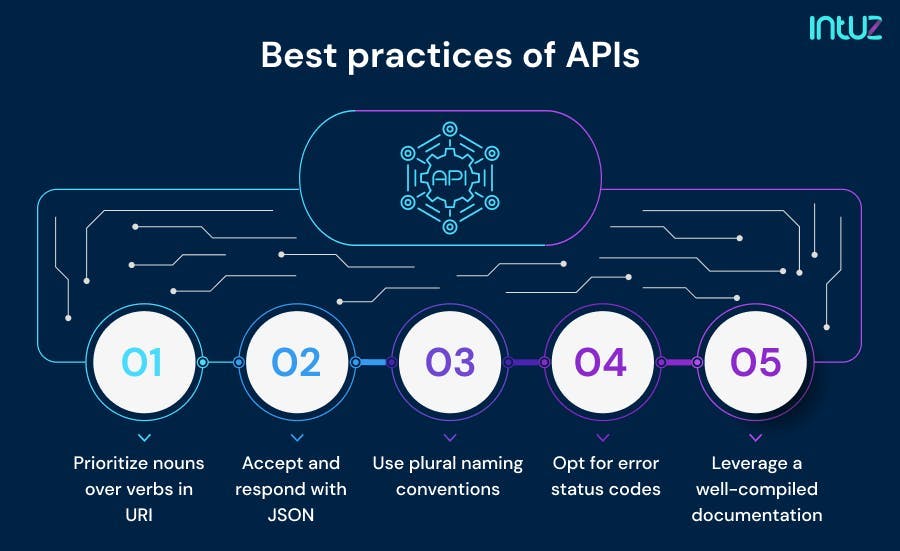
1. Prioritize nouns over verbs in URI
Since APIs are primarily developed for resources like services, it is vital to use nouns and not verbs as the former represents an entity in REST endpoint paths. Moreover, the HTTP request method already comprises paths, so the APIs will not be able to pull any new information.
2. Accept and respond with JSON
If that happens, JSON requests the payload and sends responses back. It is an open and standardized format for data transfer. It is derived from JavaScript for encoding and decoding JSON via the Fetch API or another HTTP client. Plus, server-side technologies have libraries that can decode JSON hassle-free.
3. Use plural naming conventions
Usually, it is best practice to utilize plural nouns for collections. The plural naming convention has become a global code, which also helps non-developers understand that these groups of APIs form a cluster. That is what makes APIs so popular in the software development domain.
4. Opt for error status codes
100+ status codes have already been developed by HTTP. It is a boon for developers to utilize those codes in their API design to promptly identify the issue, thus reducing the time of writing parsers for addressing multiple kinds of errors.
From locating the missing resource to finding out the cause of a denied session, developers can quickly deploy routines for managing numerous errors based on status codes.
5. Leverage a well-compiled documentation
Documentation is an important yet highly ignored aspect of a typical API structure. As this paperwork will be written for the end customers (IT specialists or developers), you must ensure it is presented neatly and in simple words.
If there is too much jargon or the layout is too complicated, they will not use the software altogether! Include all the information needed, such as the endpoint and compatible methods, numerous types of data, different parameter options, and so on.
Make the API development process faster with well-compiled documentation. It should be so robust for any new user through your API design. You will not regret it.
The difference between APIs and microservices
Comparing the two is a bit misleading because APIs are essentially a part of a microservice architecture. And each microservice in the architecture has its API, which, in turn, enables the communication between the different components in the architecture.
However, if we still need to compare the two, here are the key parameters where microservices and API stand apart from each other:
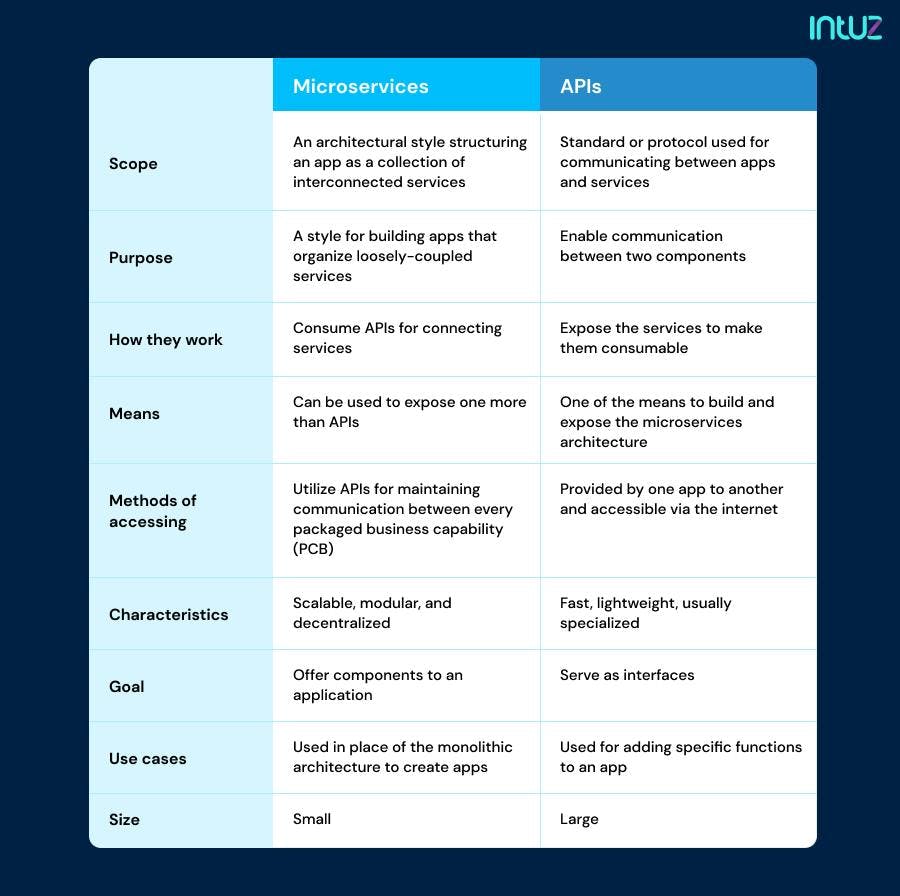
Over to you
In the past decade, leading tech-driven brands such as Netflix, Spotify and Amazon have adopted the microservice approach. It is true their deployments are a bit more complicated. However, the underlying principle is the same.
Breaking up an app's tasks into software subcomponents uncomplicates everything and makes them more efficient. The APIs tie it all together. If your organization creates or updates its software architecture, you need to give both microservices and APIs a fair chance.
To this day, both concepts are reshaping how the software works and how people benefit by better collaborating with them. If you would like to understand the difference between microservices and APIs better and gain clarity on how you can build your application, fret not.
Our expert team of developers has worked on various projects and can sort out your requirements without any hassle. Simply, please fill out the form here and wait for us to call you back. Speak to you super soon!
